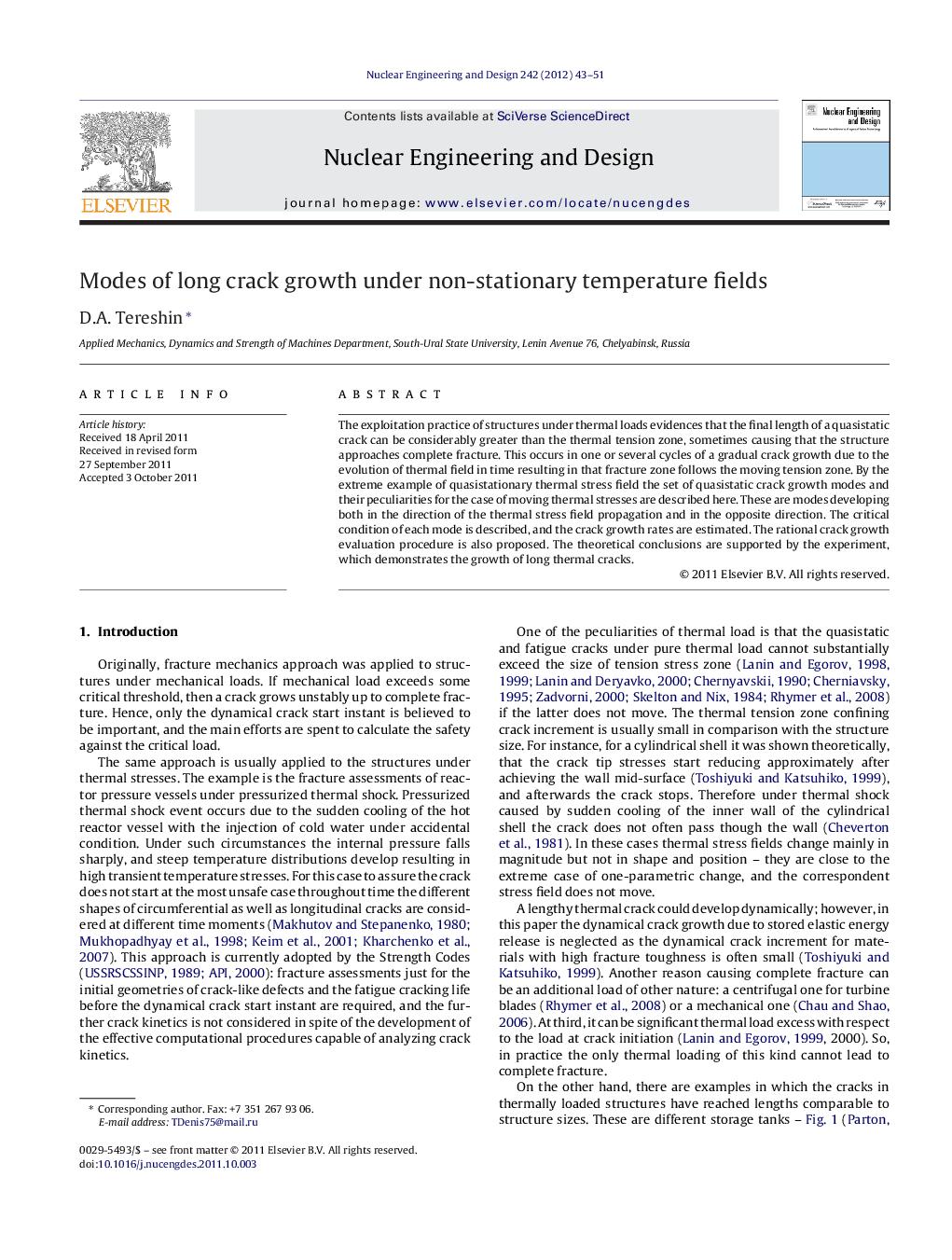| کد مقاله | کد نشریه | سال انتشار | مقاله انگلیسی | نسخه تمام متن |
|---|---|---|---|---|
| 297334 | 511755 | 2012 | 9 صفحه PDF | دانلود رایگان |

The exploitation practice of structures under thermal loads evidences that the final length of a quasistatic crack can be considerably greater than the thermal tension zone, sometimes causing that the structure approaches complete fracture. This occurs in one or several cycles of a gradual crack growth due to the evolution of thermal field in time resulting in that fracture zone follows the moving tension zone. By the extreme example of quasistationary thermal stress field the set of quasistatic crack growth modes and their peculiarities for the case of moving thermal stresses are described here. These are modes developing both in the direction of the thermal stress field propagation and in the opposite direction. The critical condition of each mode is described, and the crack growth rates are estimated. The rational crack growth evaluation procedure is also proposed. The theoretical conclusions are supported by the experiment, which demonstrates the growth of long thermal cracks.
► Moving thermal stresses can result in much lengthier cracks than usually expected.
► Codirectional crack grows gradually along with thermal zone movement.
► Oppositely directed crack grows stepwise towards thermal tension movement.
► The total crack increment can be up to the whole region of thermal tension travel.
Journal: Nuclear Engineering and Design - Volume 242, January 2012, Pages 43–51